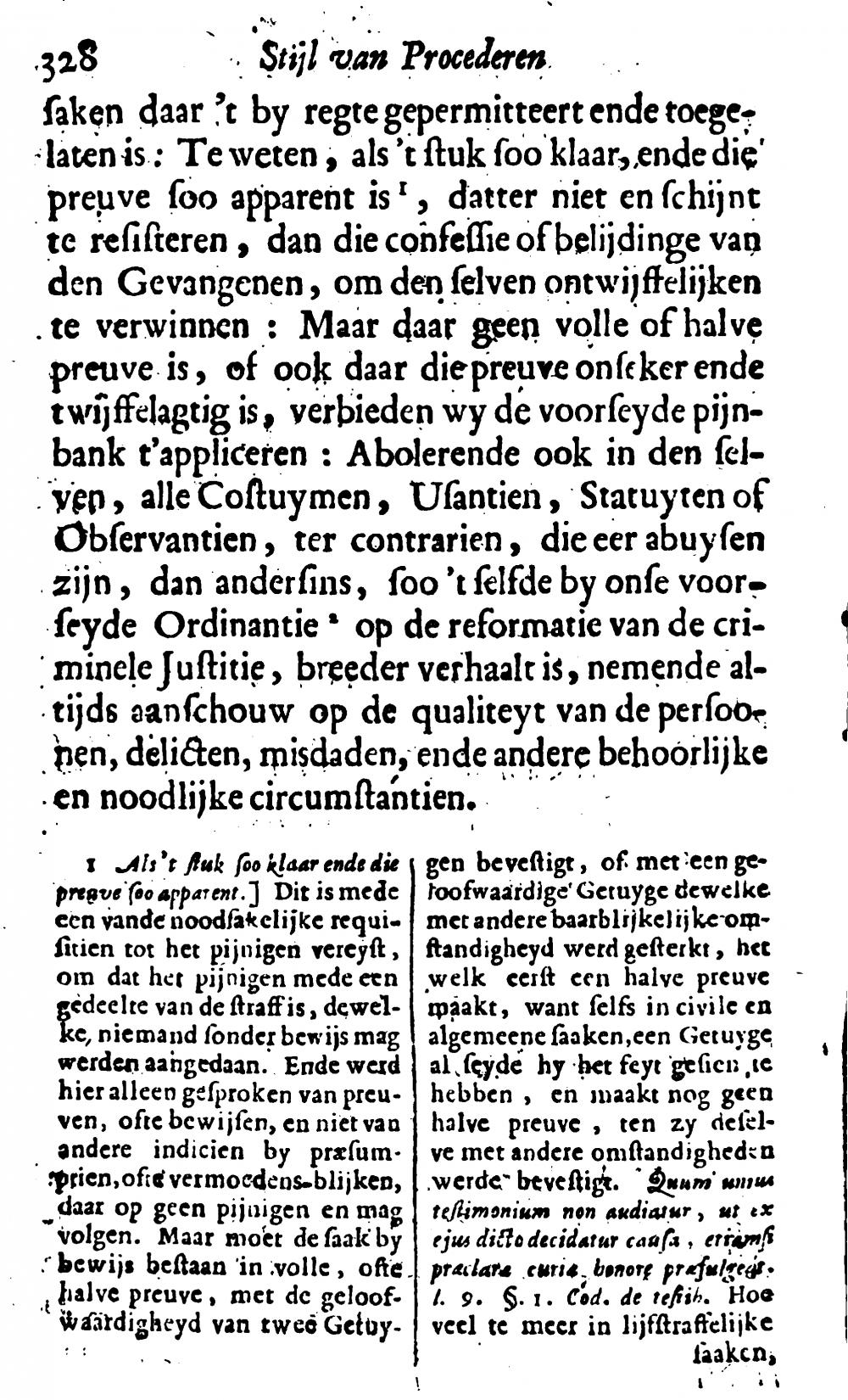Criminal Ordinance of 1570 (Article 42)
Analysis
This is the relevant clause taken from the Criminal Ordinance of 1570. It clearly lays out a set of safeguards around the use of torture. In particular, it states that torture, should not be used without the presence of significant circumstantial evidence. While this may seem straightforward, the legal system in the Dutch Republic in this period was complex with no single authoritative legal code in place. The Constitutio Criminalis Carolina and De Criminele Ordonnantien van 1570, which is cited here, were not officially in force but they had a significant influence on the administration of justice. The English seized upon this notion of half proof and argued that its absence invalidated the Amboyna trial but they neglected to consider how most court cases were run in the Dutch Republic in this period.

When and in what instance can torture be used?
Strictly forbid all judges and magistrates whoever they are to use torture except in cases where they are permitted by law, namely when the thing is so clear, and the proof so apparent, that nothing seems to be lacking except the confession of the prisoner to convict him without doubt. But where there is no full or half proof, or where the proof is uncertain and doubtful, the application of torture is forbidden.

